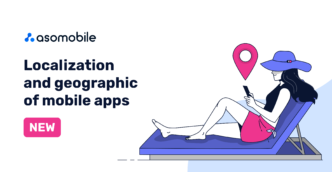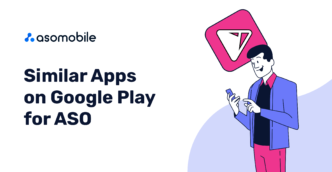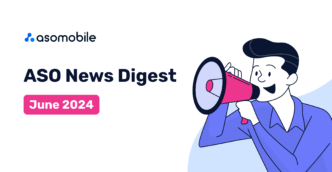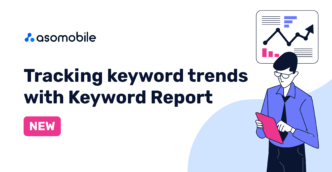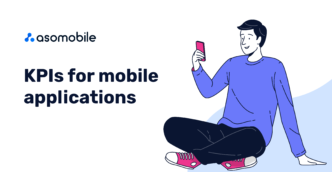Monetization of mobile apps in 2024
Monetization of mobile apps has been, is and will be. Any app has two global tasks. Be relevant to the user - help, entertain, count, remind, call a taxi and generally be useful and interesting. Well, for developers and marketplaces, the application must generate income. Therefore, monetization of mobile apps is an important issue.
Our guide will break down this important issue. We will talk about the latest trends in the mobile market in 2024, analyze popular types of monetization and share tips for increasing revenue from applications.
Mobile app market 2024
The mobile app market is a living organism, since users are also living people. World situation and politics, seasonal holidays and sales, epidemics and military conflicts, and recently, even AI technologies, the constant increase in the number of smartphone users, the introduction of 5G Internet, the steady increase in mobile screen time and digital content consumption. These and other factors are constantly changing the digital market.
After the 2021 peak, the number of new apps is declining. This is a completely normal process of transition from the number of apps to their quality.

But the ratio of paid and free applications remains almost unchanged:

But despite all the crises until 2023, 2024 shows a slight positive growth trend in the number of apps. This is what the US market looks like in numbers for April 2024:

More than 5.5 million apps on the App Store and an impressive 13.7 million on Google Play!
And in both stores, more than 70% of these applications are free.
What about the remaining 30% of paid apps?
Price, $ | Apple App Store, number of apps | Google Play Store, number of apps |
| under 1 | 1 820 000 | more than 34 000 |
| 1-2 | 17 000 | more than 25 000 |
| 9-10 | more than 3 000 | around 2000 |
Traditionally, there are more apps for Android, and income is higher from IOS-apps.
In general, the following trends in the mobile application market 2024 can be noted:
- Economic instability in 2023-2024 affected both users, publishers, and marketplaces.
- People have become more demanding and their expectations from interacting with apps have increased. Users count their money and are not ready to immediately buy a subscription or spend money within apps.
- At the same time, app advertising budgets have also decreased. The focus has shifted from attracting new clients to retaining existing ones. A balance is required between paid and free user acquisition.
Nevertheless, life goes on. The mobile application market has not subsided; there is, albeit a small, increase in the number of applications.
- The distribution of application categories in marketplaces is approximately the same:
- social networks and instant messengers remain in the top
- the popularity of financial applications and payment systems has increased - people are increasingly and more willing to engage in online shopping
- super apps are appearing on the market, combining several platforms at once. For example, messaging and e-commerce
- applications based on AI technologies are popular
- Due to the increased demands of users, there is a need for high-quality content and high loading speed. No one is ready to endure technical glitches, wait for long download times, and especially not pay for low-quality digital products.
- The introduction of 5G is already leading to an increase in the number of mobile users. With the development of technology, this trend will only scale.
After the above information, it begins to seem that app monetization is almost impossible in the current scenery. But it seems so only at first, cursory glance. Now we will tell and show everything.
The mobile application market is alive and well, you just need to keep your nose to the wind and respond to its changes in time.
Monetization of mobile apps
The mobile application market consists of paid and free products. Income from paid applications is quite clear - the user pays for the application, all its content and functionality. The developer makes a profit, the user gets the app. But the share of free apps in both marketplaces prevails - it's 70%. Somehow this 70% doesn’t quite correspond with income, does it? Let's figure it out together.
Sooner or later, free-apps developers come to the need to monetize even free apps. Since any app is first and foremost a business idea, not to mention the fact that the application itself also needs to be maintained - optimized, advertised, updated and comprehensively improved.
There are three main methods of monetization:
- advertising. For example, watching a commercial in exchange for an extra life in the game. The app makes money by displaying advertisements; the user receives the desired benefits for viewing advertisements. The circle is closed.
- in-app purchases - purchases within the app. Two main directions - one-time and reusable. One-time payment for disabling advertising and reusable, for example, annual subscription.
- a hybrid of the first two options.
Now let’s delve into the details and break down the three general methods of monetizing mobile apps into more specific types.
The US mobile market showed a 12% increase in in-app purchases. And this is during a rather difficult economic period of 2023-2024. There's a reason this is the most popular way to generate revenue from an app. And at the same time, these 12% say that users are willing to pay money; they just need to choose the optimal type of monetization or a hybrid of both. So.
- Premium - one-time cost to download the full version of the application.
Practical tips:
- convincing and transparent justifications for the benefits of purchasing the application
- free trial period of use before purchase - inspires user confidence, makes it possible to evaluate the upcoming purchase and service
- high-quality and unique functions and content corresponding to the declared premium must be present, otherwise it will be deception and a bad reputation, which is absolutely not what you want
- timely updates are important and necessary. Technical and seasonal.
- communication with users. Messaging will increase developer presence in the application, increase customer trust, and feedback will help in planning updates
- visual optimization. It should be relevant, bright, and informative. Screenshots and videos should tell everybody about the application, or the benefits of installing and purchasing it, or about the premium option, and so on.
- An additional option is to offer free and paid versions. For the free version, restrict access to some functions, for example. So to cut it down, but so that the app can be used. And at the same time offer to buy the full version of the application. Using the free option for a while, the user will know exactly what he is buying and will be more willing to do it
- Subscription - monetization of the application is determined by the resumption of regular purchases. The app itself may be free, but regular content is only available through an equally recurring payment.
Practical tips:
- subscriptions are characterized by vibrant, regularly updated content
- constant monitoring of competitors in order to be aware of current market prices and not miss possible benefits
- free and discounted versions of applications are welcome
- Seasonality and holidays are a great way to remind subscribers about yourself and offer them extensions or improvements. A smart seasonal promotion can attract new users and retain existing ones
- Advertising - viewing advertising content in applications/games. The user does not pay real money, he pays with his time spent watching ads in order to continue using the application for free or inexpensively. In games for extra lives or in-game currency.
Practical tips:
- this type of monetization is popular among users who do not want to pay for a subscription or premium options
- advertising must be relevant, otherwise it is intrusive. Moving from level to level, switching between sections - there are always natural pauses that can be filled with advertising
- reward for viewing advertisements. For example, extra time in a game. Users are ready to view advertising in advance, their engagement is higher
- Freemium - free initial download with paid upgrade to use most features.
Practical tips:
- a free user who sees premium features but can't use them is more likely to buy them. This also includes free trial periods of using the full version of apps.
- the user should have a choice between several offers. If there is plenty to choose from, it’s easier to choose
- seasonality is a must, we use it to the fullest
- monitoring competitors - their promotions, offers, discounts, prices to remain competitive
- In-app purchases - purchasing digital content inside apps/games (extra lives in games, premium options, disabling advertising).
Practical tips:
- Several offers for different budgets lead to reaching a larger audience
- localization accounting. It is important to know the new geographic market well to adapt the application and inn-app purchases
- analysis and testing. Raising and lowering prices, where and how it works best
- Mixed (hybrid) - variations of combining the above types of monetization.
Practical tips:
- a hybrid monetization model strategy must necessarily take into account the types of monetization used. Comparison of financial indicators with competitors will set the direction for further development
- even more analysis. Collecting and analyzing data for each significant season and sorting by specified factors (countries, periods, monetization) will help you find out the correlation between seasonality and income growth
- each new type of monetization in a single strategy should complement previous methods of income, but not duplicate. Give the user the opportunity to opt out of advertising. The main thing is to consider the impact of this refusal on other monetization streams
General recommendations for monetization of mobile apps
To estimate downloads and revenue, we will use available analysis tools - Downloads and Revenue.
Measuring downloads will allow us to plan our monetization strategy well, track seasonal peaks and valleys, and respond to user behavior.
Thus, Downloads from ASOMobile gives the most complete picture of both our app and competitors in any geo.
In addition to the level of downloads, we definitely take into account the level of income - everything affects it the same as downloads, and it is essentially a KPI of our app monetization strategy, do not forget to look at competitors. Downloads can be found in the ASOMobile Revenue tool.
And now, actually, about the tips:
A sound ASO strategy must take into account all modifiable and measurable effort points. A clear understanding of the app target audience is also necessary. Up-to-date information will help you respond to changes in a timely manner and adjust your monetization strategy. For example, sports betting fans tend to make one-time purchases, while language app users are accustomed to subscriptions.
Localization. Its use expands your reach to new audiences. When entering new geographic markets for an application, it is worth considering possible partnerships. We take into account geographical and cultural differences, what works well in Japan does not work in Europe.
Seasonality and holidays are our friends! A great excuse to sync and update. Let's not miss these opportunities.
Statistics and experience. We use the accumulated data, analyze it, predict market development, and be ready for changes in the future.
Take advantage of your competitors! The more we know about competitors' monetization levers, the more competitive we are. The fewer mistakes you make in your own strategy.
Financial and economic awareness. The situation in the world is unstable, inflation, crises - all these factors must be taken into account in your tactical vision of monetization. Offer discounts, promotions, be aware of competitors’ prices, and use advertising wisely. Combine all monetization tools with each other like puzzles.
For gaming applications, especially in the casual genre, this type of monetization as advertising is still relevant. Advertising is also successfully used in other gaming genres, language and fitness apps, antiviruses, and news resources. Clearly defined app niches will help you choose a successful way to monetize them.
And the most important parting word - these three things are persona non grata:
- intrusive advertising is bad. Maintaining a balance between advertising and rewards is good.
- Nobody likes aggressive purchases. A contextually relevant purchase offer, reasoned, listing additional features is much better. A trial period for using the premium mode is a great way to attract new users and retain existing ones.
- away with subscription fatigue. Push messages, email, social networks - you need to communicate with users. But we must be appropriate and correct, and avoid intrusiveness.
 Українська
Українська  Русский
Русский  Español
Español 